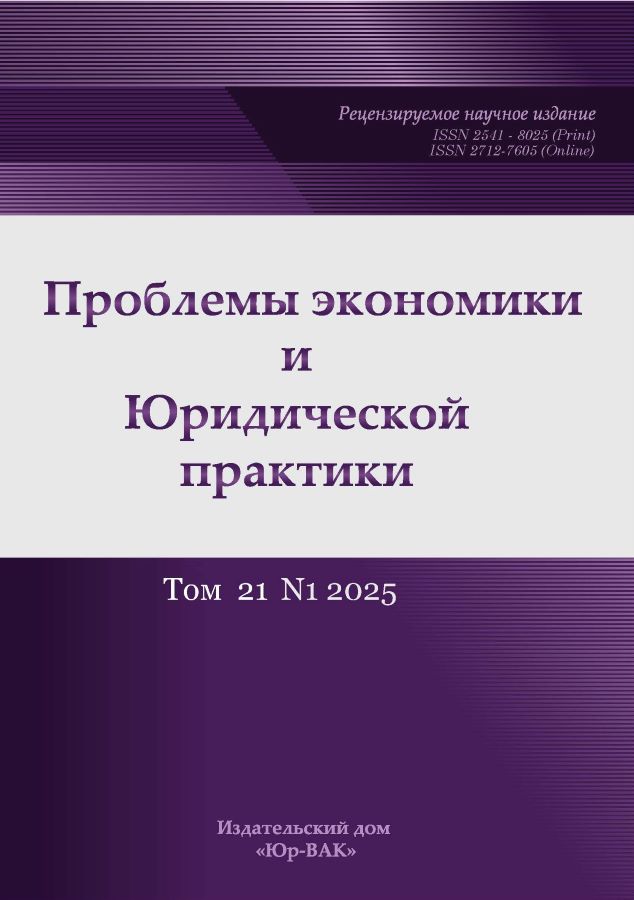Macro-Level Tax Burden: Impact on Economic Development
- Autores: Smirnova E.E.1, Glebov G.O.1
-
Afiliações:
- Financial University under the Government of the Russian Federation
- Edição: Volume 21, Nº 1 (2025)
- Páginas: 235-240
- Seção: Finance
- URL: https://journals.eco-vector.com/2541-8025/article/view/678514
- DOI: https://doi.org/10.33693/2541-8025-2025-21-1-235-240
- EDN: https://elibrary.ru/AEVIXQ
- ID: 678514
Citar
Texto integral
Resumo
This study is devoted to analyzing the impact of tax burden on economic processes in the Russian Federation with a special assessment of the definition and analysis of tax burden on macroeconomic processes. By tax burden is understood the volume of tax payments of individuals and legal entities, measured as a percentage of income or assets. The structure of tax burden by types of economic activities in Russia for 2023, as well as changes in tax policy for the period 2021–2023 is analyzed. Based on the analysis, the factors influencing the formation of tax policy are considered, including the need to finance social programs and support certain segments of the economy. Tax burden indicators in Russia are compared with countries with different levels of development, differences and trends in tax policy are revealed. Research writing purposes: analyzing the current state of the tax burden, assessing the impact of the tax burden on the economy, comparative analysis, identifying factors affecting the tax burden, justifying the significance of tax policy and developing conclusions about the future of the tax burden. The conclusions received during the research: the current tax burden in Russia, its dynamics and impact on the economy were determined.
Texto integral
Sobre autores
Elena Smirnova
Financial University under the Government of the Russian Federation
Autor responsável pela correspondência
Email: elenasmirnova@mail.ru
Código SPIN: 6926-9540
Cand. Sci. (Econ.), Associate Professor of the Department of Taxes and Tax Administration
Rússia, MoscowGleb Glebov
Financial University under the Government of the Russian Federation
Email: glebov_35@inbox.ru
Código SPIN: 9147-9780
Specialist of the Faculty of Finance
Rússia, MoscowBibliografia
- Federal Tax Service of Russia. (2023). Reference materials on tax burden. [Electronic resource]. URL: https://www.nalog.gov.ru/html/sites/www.new.nalog.ru/docs/about_fts/alparus/alparus.docx.
- Satyukova, S.Yu. (2022). Tax burden: analysis and prospects. Journal of Economic Research, 15(3), 45-60.
- Smirnova E.E. Assessment of tax risks, arising from the audited persons-objects of tax control: regional aspect // Problems of economics and legal practice. 2024. V. 20. № 2. P. 265–270.
- BRICS: tax policy and its impact on economic development. (2021). Bulletin of International Economics, 10(2), 78-90.
- OECD. (2023). Tax Policy Studies: Taxation in the United States. [Electronic resource]. URL: https://www.oecd.org/tax//.
- European Commission. (2022). Tax burden in EU countries: a comparative analysis. [Electronic resource]. URL: https://ec.europa.eu/taxation_customs//.
- World Bank. (2023). Tax burden in developing countries: challenges and opportunities. [Electronic resource]. URL: https://www.worldbank.org/en/topic/taxation/.
Arquivos suplementares









